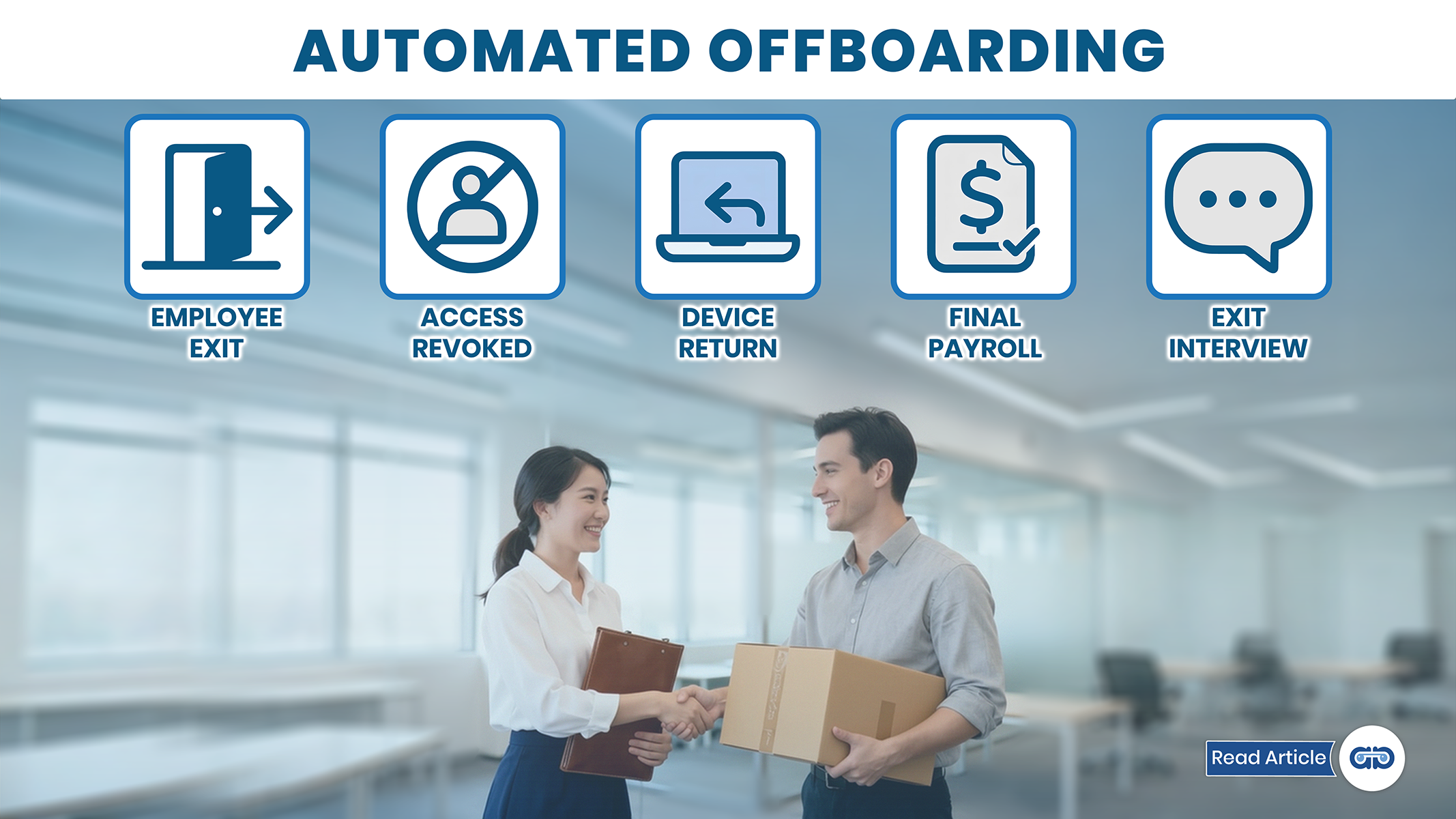While most companies focus on creating a smooth start for employees, they often forget that how someone leaves matters just as much.
Employee exit processes are often overlooked in digital transformation strategies. Most organizations prioritize onboarding and engagement, while offboarding remains stuck in manual workflows, spreadsheets, and multiple system dependencies. This creates operational friction, compliance risks, and poor employee experiences.
Offboarding automation removes these bottlenecks by standardizing, orchestrating, and securing the exit lifecycle.
The High-Risk Nature of Offboarding
Offboarding is one of the most critical, risky, phases of the employee lifecycle. The gap between an employee’s resignation or termination and their actual access removal is a vulnerable period for any organization.
Even a few hours of delay can lead to:
- Unauthorized data downloads or leaks
- Access to confidential systems post-exit
- Unintentional policy breaches
- Incomplete payroll or compliance closures
In modern SaaS environments, employees often have credentials across dozens of tools, like email, HR systems, CRMs, file storage, project management platforms, and more. Managing this manually is both tedious and error-prone.
Automated offboarding eliminates this exposure by triggering predefined workflows the moment an employee’s status changes in the HR system. From access deactivation to device return reminders, everything is executed instantly and consistently.
Standard Practices
Manual offboarding depends heavily on memory, coordination, and checklists. Different departments might interpret steps differently, or worse, forgetting them entirely.
Automation solves this through standardized workflows.
HR teams can define structured processes for every departure type, such as voluntary, involuntary, retirement, or contract expirations. Once triggered, the workflow ensures every step happens in the right order:
- Notifications sent to managers, IT, and finance
- System access revoked
- Exit interview scheduled
- Payroll and benefits closed out
- Compliance documentation archived
This uniformity ensures no task is skipped, and no system is left active, regardless of who is handling the offboarding.
Reducing HR Workload and Errors
Offboarding involves coordination across multiple functions, including HR, IT, payroll, and facilities. Traditionally, HR spends hours sending emails, following up, and manually updating systems.
This manual dependency increases the chance of errors. A missed notification, a delay in access removal, or incomplete documentation can happen anytime.
With automation, once an employee is marked as “offboarded” in the HRIS, the workflow takes over. It updates all connected systems, notifies stakeholders, and logs every action.
Automation not only saves time but also eliminates friction that leads to mistakes.
Strengthening Compliance and Security
Data privacy regulations like GDPR, HIPAA, etc., have made secure offboarding a compliance necessity. Retaining unauthorized access to company systems after an employee’s exit can be a serious breach.
Automated offboarding integrates directly with identity and access management (IAM) tools, ensuring that:
- All accounts are deactivated or reassigned immediately
- Personal data is archived or deleted according to policy
- System logs provide proof of compliance
It also ensures physical assets, like laptops or ID cards, are tracked until they are returned. This level of traceability and accountability is almost impossible to achieve through manual tracking.
Protecting Brand Reputation and Relationships
Employees remember how their journey ends. A smooth, respectful exit process reinforces the company’s professionalism and brand integrity.
On the other hand, disorganized offboarding with delayed pay, unresponsive communication, or forgotten clearances, can turn into public complaints, damaging the employer’s reputation.
Automation ensures that every departing employee receives the same thoughtful, organized experience. Notifications are timely, pay is processed accurately, and exit surveys are sent automatically to capture feedback.
Enhancing Insights with Data
Every offboarding process generates valuable insights from reasons for exit to engagement trends and departmental turnover. But collecting and analyzing this data manually is time-consuming.
Automated offboarding systems can integrate analytics dashboards that:
- Track exit reasons and trends over time
- Identify departments with high turnover
- Measure offboarding cycle time and efficiency
These insights help HR leaders pinpoint underlying issues, refine retention strategies, and strengthen organizational health.
Building a Future-Ready HR Function
Offboarding automation is more about elevating HR processes than replacing them.
When repetitive, manual offboarding tasks are automated, HR professionals can focus on improving employee experience, strengthening engagement, and building culture.
Automated offboarding transforms what was once an administrative burden into a strategic advantage. It creates consistency, transparency, and security, all while freeing HR teams to be proactive rather than reactive.
Conclusion
Offboarding is a structural necessity for secure, compliant, and efficient HR operations. It removes manual friction, enforces process discipline, reduces legal and operational risk, and delivers a cleaner employee experience.
As digital transformation strategies mature, modern HR teams can no longer rely on ad hoc exit handling. Automated offboarding defines the standard for operational resilience in modern enterprises.

